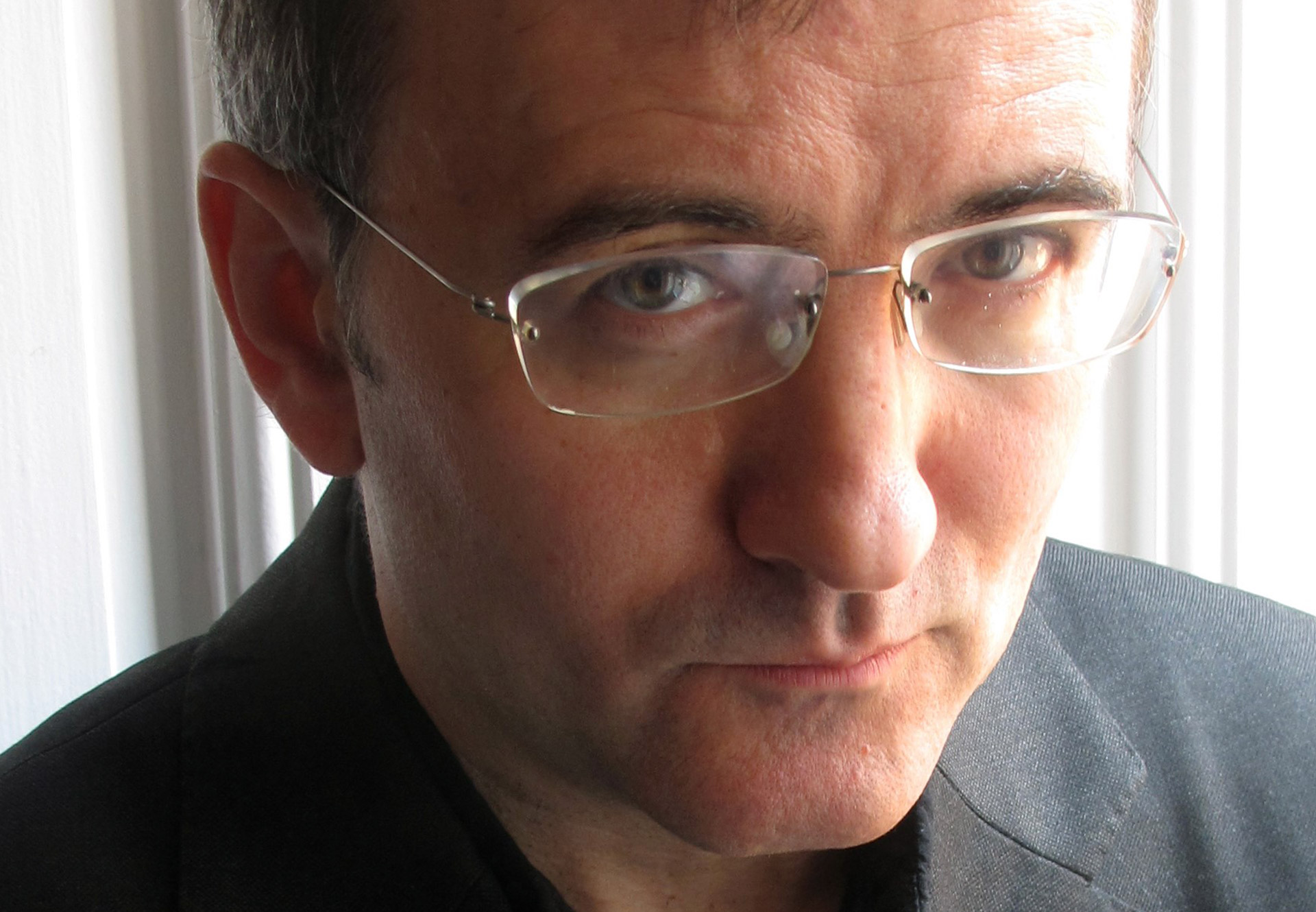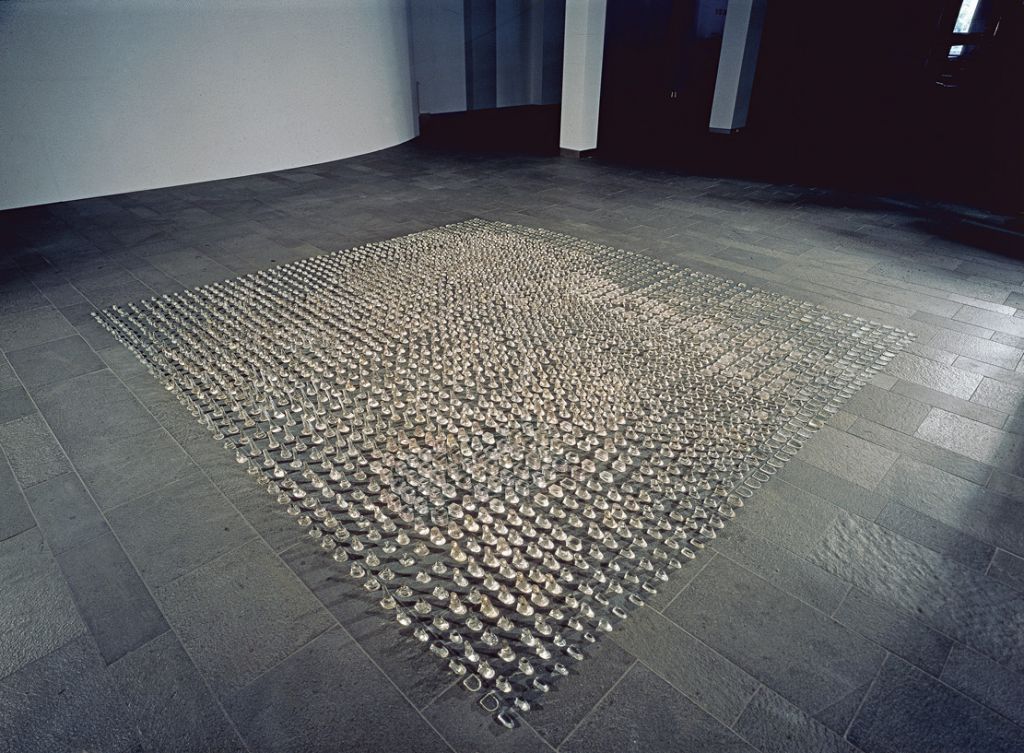Moraza, Juan Luis
Vitoria, Spain, 1960

19
60
Born on June 22.
78
Receives second prize in a competition to plan Parque de Tellaetxe in Barakaldo, Spain.
79
Together with artist María Luisa Fernández, creates the Comité de Vigilancia Artística (CVA), which is how they sign a series of conceptual works that explore the relationship between art and philosophy. Their first work appears the following year in the group exhibition Espacio poético experimental at Casa de España in Paris.
82
CVA presents its first exhibition, at the Aula de Cultura de la Caja de Ahorros Municipal in Bilbao. Earns a degree in fine arts at the Universidad del País Vasco in Leioa.
83
The CVA exhibition Cicatriu a la matriu is presented at Galeria Metrònom in Barcelona. Begins teaching in the faculty of fine arts at the Universidad del País Vasco, where he will remain until 1990. Wins second prize at Gure Artea 1983, sponsored by the Basque government, and in the city of Bilbao’s sculpture competition. Receives a grant from the Basque government.
84
CVA is disbanded. Wins second prize for sculpture at Gure Artea 1984.
85
Participates in Mitos y delitos at Galeria Metrònom in Barcelona; the exhibition later travels to the Aula de Cultura de la Caja de Ahorros Municipal in Bilbao.
86
Exhibits at the Casa de Cultura in Basauri, Spain, and the Casa de Cultura in Mungia, Spain.
87
Receives the Premio Muestra de Arte Joven from the Spanish Ministry of Culture.
88
Holds his first solo exhibition in Madrid at Galería Oliva Mara.
89
Receives a sculpture prize from the province of Álava and is commissioned to create a public sculpture.
90
The solo exhibitions Cualquiera, todos, ninguno, at Galería Rita García in Valencia, Spain, and ARLMA, at Galería Berini in Barcelona, take place. Creates a public sculpture for the provincial internal revenue office in Vitoria, Spain. Publishes the book Seis sexos de la diferencia. Receives a grant from Fundación Cultural Banesto.
91
Receives a grant from the Ministry of Foreign Affairs to study at the Academia Española de Historia, Arqueología y Bellas Artes in Rome.
92
Commissioned by the Universiteit Utrecht, writes the essay “Complejos y complejidades: Cien años de arte español.” Creates the illustrations for a story on the Olympics published in Revista de occidente magazine in Madrid.
93
Publishes the book MA (non é) DONNA: Imágenes de creación, procreación y anticoncepción and holds an exhibition under the same title at Galería Elba Benítez in Madrid.
94
The Sala Amárica in Vitoria, Spain, organizes the exhibition Ornamento y ley. Creates the work Éxtasis, Status, Estatua. Exhibition at the Bienal de São Paulo and the group exhibition entitled Cocido y crudo at the Museo Nacional Centro de Arte Reina Sofía. Earns a doctorate in fine arts from the Universidad del País Vasco.
95
The Museo Pablo Gargallo in Saragossa, Spain, presents the exhibition Éxtasis, Status, Estatua. Exhibits at Galería Windsor Kulturgintza in Bilbao. Begins teaching sculpture at the Universidade de Vigo in Vigo, Spain.
95
Exhibits at the Universidad Pública de Navarra in Pamplona and again at Galería Elba Benítez in Madrid.
97
Takes part in the Bienal d’Art Leandre Cristòfol in Lleida, Spain, where he is the recipient of an award.
98
The exhibition Anestética (algologos) opens at the Centro Andaluz de Arte Contemporáneo in Seville and later travels to the Sala Cristòfol in Lleida, Spain. Exhibits at Galería DV in San Sebastián, Spain.
99
Holds the exhibition Interpasividad at the Koldo Mitxelena Kulturunea in San Sebastián, Spain. Moraza’s work is featured in Spanish and Basque Contemporary Art at the Guggenheim Museum Bilbao. Teaches a course entitled “Interpasión” at Arteleku in San Sebastián.
01
Moraza’s work is featured in Ironía at the Fundació Joan Miró in Barcelona; the exhibition later travels to the Koldo Mitxelena Kulturunea in San Sebastián. Leads the research project “Arte y Saber” at Arteleku in San Sebastián.
03
Moraza’s Éxtasis, status, estatua is included in the exhibition Transparencies at the Guggenheim Museum Bilbao. The solo exhibition PLATA: Pensar América II takes place at the Casa de América in Madrid.
04
Artium, Centro Museo Vasco de Arte Contemporáneo in Vitoria, Spain, holds an exhibition on the history of CVA; the exhibition will travel the following year to the Centre d’Art la Panera in Lleida. Moraza’s work is shown at Galería Elba Benítez in an exhibition titled S¡. Moraza’s Gnomón (Estilo hegemónico) is temporarily installed on the façade of the Museu d’Art Contemporani de Barcelona. Takes part in the exhibition Botánica política: Usos de la ciencia , usos de la historia at the Fundació “la Caixa” in Barcelona.
05
Moraza’s work is featured in the exhibition Desacuerdos: Sobre arte, políticas y esfera pública en el estado español, held simultaneously at the Museu d’Art Contemporani de Barcelona and the Centro José Guerrero and Palacio de los Condes de Gabia in Granada. Teaches aesthetics in the faculty of architecture and fine arts at the Universidad Europea de Madrid.
06
Curates, together with Carmen Buró, the exhibition Tejidos: Óseos, pictóricos, arquitectónicos at La Casa Encendida in Madrid. Teaches a course titled “Arte y psicoanálisis frente a la sociedad contemporánea” at La Casa Encendida in Madrid.
07
Curates the exhibition Unknowns: Mapping Contemporary Basque Art at the Guggenheim Museum Bilbao. Moraza’s work is featured in the exhibition Existencias at the Museo de Arte Contemporáneo de Castilla y León in León, Spain.
08
His work is featured in the exhibitions Soy el final de la reproducción at SculptureCenter in New York and España 1957-2007: L’arte spagnola da Picasso, Miró, Dalí e Tàpies ai nostri giorni at the Palazzo Sant’Elia in Palermo, Italy. Presents a lecture titled “Descomposición” at Sala Luis de Ajuria, Obra Social de Caja Vital Kutxa in Vitoria, Spain.
10
Curates the exhibition El retorno de lo imaginario. Realismos entre XIX y XXI at the Museo Nacional Centro de Arte Reina Sofía, Madrid. His work is shown at Galería Moisés Pérez de Albéniz in Pamplona, and at the Centro Cultural Montehermoso in Vitoria-Gasteiz. His work is featured in exhibitions at the Museo del Patrimonio Municipal in Málaga and the Palais des Beaux-Arts/Paleis voor Schone Kunsten, Brussels.
11
Museo Nacional Centro de Arte Reina Sofía, Madrid, purchases the work Ornamento y ley. Participates in conference entitled Canales alternativos (o no) de creación. Una aproximación crítica, organized by the Universidad de Santiago de Compostela at the Centro Galego de Arte Contemporánea (CGAC), Santiago de Compostela.
12
His work is on display in Work, Power and Control, an exhibition organized by the Museu d’Art Contemporani de Barcelona (MACBA) in Barcelona, Spain.
Participates in the group exhibition Montage of Attractions (Pull the Thread. Artium Collection), at Artium Vitoria-Gasteiz.
13
Participates in the exhibition Public Treasure, held in Artium Vitoria-Gasteiz.
14
His work is selected for several group exhibitions, like Suturak // Cerca a lo próximo, San Telmo Museoa in Donostia/San Sebastián; Disparity and Demand, La Galerie – Centre d’art contemporain in Noisy-le-Sec, France; and Nothing Stops, Fundació Suñol in Barcelona, Spain.
15
The solo exhibition República opens at Museo Nacional Centro de Arte Reina Sofía (MNCARS) in Madrid.
His work is part of the group exhibition The Trick in the Smile, held in Artium Vitoria-Gasteiz.
16
Presents the exhibition Trabajo absoluto at Museo de Arte Contemporáneo Gas Natural Unión Fenosa (MAC) in A Coruña, Spain, and in Espacio Mínimo in Madrid.
Participates in the group exhibition Vestir y desvestir cuerpos. Fenomenologías de aparición, Centre d’Art la Panera in Lleida, Spain.
17
The exhibition titled De Oficio is on at Galeria Estrany-de la Mota in Barcelona, Spain.
18
Participates in the panel discussion held in the context of the cultural project The Great Conversation at Tabakalera – International Center for Contemporary Culture in Donostia/San Sebastián.

